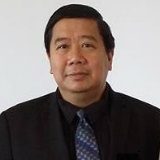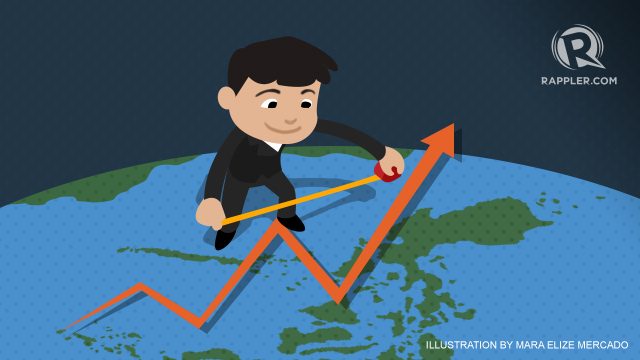SUMMARY
This is AI generated summarization, which may have errors. For context, always refer to the full article.

Citizens love their own countries. Americans are very patriotic, saying they have the best economy, universities, technologies, and pizzas in the world, whether those assertions are true or not. Filipinos insist that we have the most beautiful women, the best singers, beaches, food, and the fastest growing economy.
Political economy can help us make informed statements that rank countries. Political economy analyzes the relationship among wealth, well-being, and the government.
Traditionally, we look at gross national product: goods and services an economy produces annually, plus income from foreign investments, minus income overseas residents earn within the national economy.
By the 1990s, governments switched to gross domestic product, measuring all production and services within a country only. GDP per capita is GDP divided by the number of citizens in an economy, treated as income per person. Textbooks use GDP to measure an economy’s wealth. The Philippine’s 2013 GDP/capita rank was 58th poorest out of 184 economies.
But GDP does not consider women’s contribution, environmental destruction, people’s happiness, and others.
Political economists search for better tools to measure a country’s well-being. The competitive index ranks economies based on market openness, liberalization, non-regulation, and privatization. The Philippines is 76th globally. GNP, GDP, and CI only refer to large-scale abstract numbers, meaningless to individuals.

Beyond GDP: Human Capital Index
The World Economic Forum created the Human Capital Index where the Philippines ranked 46th in 2015. Top 5 are Finland, Norway, Switzerland, Canada, and Japan. HCI measures the capacities of people and how economies maximize their talent pool. Measured are educational attainment, workforce age distribution, economic participation, and skills.
The United Nations created the Human Development Index which looks at economic growth, literacy, and life expectancy.
Nature was assumed to be unlimited, but is being destroyed massively. Today, sustainable development measures the dynamic relationship among (1) human population pressure, (2) use and abuse of nature, and (3) economic growth.
Women in many parts of the world do unpaid household and farm work. Gender accounting measures the contributions of women to development, highlighting and monetizing their labor. In the US, for every dollar men earn, women only earn 77 cents.
The ten worst countries for women where they experience forced child marriage, physical abuse, rape, or killing are Chad, Afghanistan, DR Congo, Sudan, Guatemala, Mali, India, Pakistan, and Iraq.
The Philippines is number one in Asia and among the top countries globally for women’s participation in leadership positions both in the private and public sectors.
Other areas to measure a country’s well-being
Movehub, an international moving company, indicated that the Philippines has the 15th lowest cost of living in the world, for countries with available data.
The Economic Intelligence Units created the Food Security Index, measuring food affordability, availability, quality and safety. Ranked 72nd out of 109 economies, the Philippines is part of the “moderate environment group.”
The Social Progress Index measures the good society, describing the well-being of the people:
- basic human needs: nutrition, basic medical care, water and sanitation, shelter, and personal safety
- foundations of well-being: education, information, health, and sustainable environment
- opportunity: rights, choice, non-discrimination, and access to advanced education.
Transparency International developed the Corruption Perception Index. One being the least corrupt, the Philippines was number 94 in 2013 and 85 in 2014.
The World Justice Project ranks the Philippines 51th overall place out of 102 countries for constraint on government power, absence of corruption, open government, regulatory enforcement, order and security, criminal justice, fundamental rights, and civil justice.
When discussing income inequality, textbooks discuss GINI Coefficient (inequality index) and the Lawrence Curve. Boring! So political economists use “the 1%” image as a powerful tool to portray income inequality. Historical data show that the economic wealth trickling down to the poor, if the rich are given incentives, such as tax exemptions, is a myth.
Economist Thomas Piketty said that because in the long-run capital growth rate is higher than economic growth, the rich will become richer and the poor will become poorer. Only about 85 persons – including Bill Gates, Warren Buffett, George Soros, the Koch brothers, and Wal-Mart’s Walton siblings – have the combined wealth equivalent to the wealth of the poorest half of humanity of 3.5 billion people.
In the US, the top 0.1% is worth as much as the bottom 90%.
Using culture to rank the world’s countries, the World Values Survey classifies countries as either traditional or secular-rational and on survival or self-expression mode. The Philippines clings to traditional and survival values.
Using the Freedom Index, Freedom House ranks countries as free, partly free, or not free, based on their respect for political rights and civil liberties. The Philippines is partly free.
Reporters Sans Frontières placed the Philippines 149th among the 180 countries in the 2014 World Press Freedom Index.
The if-the-world-were-100-people chart reduces gender, age, religion, literacy, Internet, phones, water, poverty, nutrition, housing, language, rural/urban residency, and continent into a simple powerful image.
Is the country’s well-being related to its citizen’s happiness?
Based on the 2015 World Happiness Report, the ten happiest countries are Switzerland, Iceland, Denmark, Norway, Canada, Finland, Netherlands, Sweden, New Zealand, and Australia. Note that social democratic welfare states Iceland, Denmark, Norway, and Netherlands are on the Top Ten happiest countries in the world. Happiness is measured in terms of GDP, life expectancy, generosity, social support, freedom, and no corruption.
Higher well-being is correlated with outcomes linked to stability and resilience, such as healthcare use, trust in elections and government, stress in life, food/shelter security, and volunteerism. People who live in the happiest countries have built stronger social support and honest and accountable government.
The Philippines is ranked 90th in the World Happiness Index. Countries which did not fare well have low income and lack social support.
There is a separate Happiness Index for Gay Men.
The freeware Gapminder empowers the end-users to choose from hundreds of national-level statistics to compare economies: women’s fertility, child mortality, foreign aid, foreign debt, fertility, carbon emission, child mortality, life expectancy, corruption index, democracy score, armed conflict, crime, education, energy, health, population, infrastructure, and employment.
Social-democratic economies must be right, as they do well in all measures. All tools are imperfect to measure a society’s well-being. New models provide new perspectives of an aspect of people’s well-being, instead of pure abstract numbers only. – Rappler.com
Rey Ty is a political observer, author, political theorist, comparativist, political risk and policy analyst, and lecturer. He received his doctorate from Northern Illinois University and Master’s degrees from the University of California at Berkeley and Northern Illinois University.
Add a comment
How does this make you feel?
There are no comments yet. Add your comment to start the conversation.